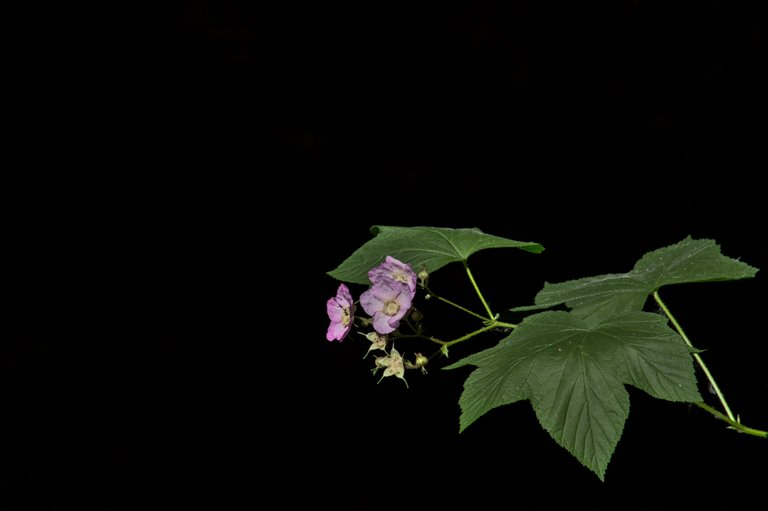Hi!
Today the forest was my studio, and I took this interesting photo with my crappy long zoom lens. The photo subject itself is unbelievably sharp, and very well separated from the background.

Purple-flower raspberry (Rubus odoratus)
I took this photo using a small aperture of F11, sensor sensitivity at ISO 100, and a relatively quick 1/320s exposure, as the sun was shining brightly on the plant.
This time I didn't use the dual-iso function at all because I wanted the shadows to go really black.
It is interesting how you can get these studio-like effects even when without a studio or a flash. Nature is cool sometimes.
How do you like these kinds of photos?
See ya soon!
Weeklies |
|---|
Weekly and Fresh 📸 #21 |
Weekly and Fresh 📸 #20 |
Weekly and Fresh 📸 #19 |
Weekly and Fresh 📸 #18 |
Weekly and Fresh 📸 #17 |
How could you made that background dark? It's pretty great & sharp- yeah!@gamer00,
Cheers~
Thank you!
I let only the light from the leaves and flowers get through using the camera settings:
Small aperture and fast shutter speed to limit the light that gets onto the sensor, and low sensitivity to limit the sensor from picking up any extra light that might still be coming through.
This wouldn't be possible with the camera in automatic mode though, you'll need to set it to full manual.
Amazing photo! The shutter speed is very fast! I wonder if I could try to do the same with my old film camera.
Thanks!
Yes it might work. If your camera supports manual settings for the aperture, shutter speed and ISO sensitivity, it can be done.
The easiest way to do it is to put the subject in direct sunlight, so that the surrounding background behind is sufficiently unlit.
The problem is that when you get the film developed, you don't know what you will be getting. It's a somewhat lengthy trial and error kind of process, but on a digital camera you can instantly see whether you got all the settings right or not.
One way you can try to avoid making too many trial photos on film is by trying to measure the light directly from the brightest part of your subject.
Depending on the camera used this might be possible.
However, I'm not sure how well the film cameras fare with their light meters. My Fujica ST605N does have a meter, but I recall it only measures the overall light coming in through the lens, and can not be used to measure it from a fixed point in the image.
Albeit being a bit tricky, I still don't think it is impossible though. It might even be worth a try.
Thank you so much for your detailed explanation! From the look of it, I need to get a good second-hand digital camera one day! But these keep changing every year making it very difficult to make up my mind!
Photographay level is like insane! Just separated the flower from the background and highlighted on leaf and flower. I am just fan one of kind this category flower.
The picture is just awesome. Simple.
Very interesting!